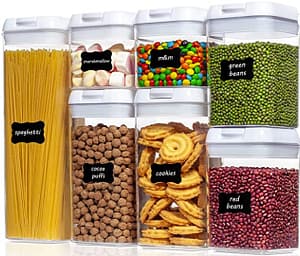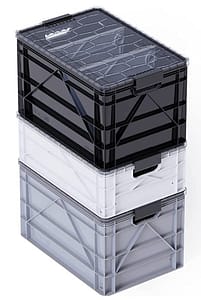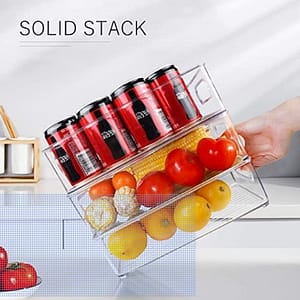That’s the sound of the police!
If you break these laws the Scottsdale Home Organizer police will find you and arrest you. They have precogs like Tom Cruise did from the movie Minority Report so there’s no getting around it.
Follow these rules!
Take the cuffs off copper, it was just a drill, you’re not actually get arrested, but your house will be much easier to live in after you apply just 1 or two of these rules.
Let’s get into the law book, shall we?
Law 1 – Categorize
This might seem like an obvious law, but it’s so essential, and categorizing can be difficult at times. You have to set up the categories so you’ll remember them, and remember what goes into which category.
Here are a few suggestions to get you started so you’ll know how to get and stay get organized:
– By color
– Alphabetically title first or last (or if you’re really a rebel, every 3rd letter
– By size
– By shape
– By year
– By fabric (or other material)
– By event such as going out, work, home
– By item (watches, belts, hats)
– By amount of disgust (Put all the foods you hate in the back, and all the ones you love in the front)
– By frequency of use
– By Date
– By Person (Moms stuff, Dads stuff, Babies stuff)
You can also nest categories so you can do, by person > then Mom’s stuff > then by item (glitter) > then by color.
Find what works for you and don’t be afraid to blow up the system and start over when it’s not working and you can’t find anything.
2 – Order
Okay, so you have your categories, but what order do they go in?
Well, order is how to stay organized.
Anyhow, you now need to identify which categories of items you pick from most often, that’s step 1. Step 2-5 is to identify what categories you pick from weekly, bi-weekly, monthly, and yearly.
Once you have that figured you’ll put everything in order of frequency of use. For instance, if we are organizing a closet and you grab t-shirts, socks, and bras daily, bi-weekly you wear a button-down of some kind, and every month you go out drinking with the girls so you wear a hot dress out.
Then, you’ll keep the t-shirts, socks, and bras on the middle eye-level shelves. The button-downs go one shelf up or down, and the dresses go on the very top or very bottom shelves. That is of course if we were to fold dresses, which we typically don’t because of how awkward they can be.
3 – Label and color
To help you find stuff labels, especially colored labels, can most definitely help with that!
Once you’ve nailed down your categories and have them all in place you can get all your labels made so that you remember what is where until it’s memorized, and if other people have to use the system they can find what they need when they need it.
A decent way to do this is by using a label maker. I personally use this $30 brother from amazon, which gets the job done. My other gripe with label makers is that their labels only last so long, and eventually they lose their stickiness and peel.
However, if you want full color, with a font of your choice, and any design, then we can help you design and make custom labels!
With colored labels, at a glance, you can find what you need and don’t have to read them after a while. You can also color-match items so it’s clear where they should return to!
Follow the law, label your categories.
4 & 5 – Use shelving so you never have to stack
Great shelving is key to storage and organization. The wrong set of shelves will make it difficult to access what you need when you need it.
The reason you want great shelving is because you don’t want to have to stack items. So the more shelves, the better!
Although careful, sometimes it can be worse, but if they are adjustable, bonus points.
Great shelving should be
A – Not too deep: Deep shelving make it tough to get to the back – Get drawer slides if you have deep shelves, you should just always use these.
B – Make them adjustable: fixed shelving is tough because you’re stuck with what you’ve got. Cardboard can help in a pinch however, with adding makeshift shelving if needed.
C – Don’t have dead spaces: You don’t want a door to be in the middle, and then have a wall on either side of the door so that you have to reach around the wall to get to the end of the shelf.
This should help so you don’t have to stack items. Especially bins, ideally 1 bin per shelf, 2 max, but trust me, you don’t want to have to take a bin off to get to another every time you want to get into a bin.
6 – Contain. Contain. Contain
The amount of container options out there is plentiful but actually isn’t enough. There are so many times I need specialty containers, but that’s A) why I make them for myself and others, and B) a topic for another day.
Anyhow, we want to contain things, it’s how we get organized, sometimes with lids, more often than not without them. Containing items helps segment, keep your categories clear and distinct, and make it easier to find what you need when you need it.
However there are downsides to containers, sometimes they get cluttered and stuffed full. You then have to dig through the container to find what you need, so more, smaller containers, or containers within containers is often a good solution to this problem.
The key is to keep things together.
here are a few containers that I recommend:

Sidio adjustable divider crates


Sterilite 17511712 6-Quart ClearView Latch Box

7 – Backstock
You need an area, often the garage, or a high shelf with 2-4 large bins to have an space for the excess items you buy in bulk that don’t fit in the main access areas.
Most people need an area for paper towels, toilet paper, and bottled drinks.
Having a space, say, on the top shelf of your pantry is another great option for a back stock area.
We did this for one of my clients and kept her snacks, breakfast items, and cooking items in 6 large bins on the top shelves of her panty. This way when she needs to restock the main everyday stuff, she just grabs the stool and pulls the back stock bin down, replenishes, and is quickly back to day-to-day operations.
8 – The one-hand rule
No you pervert, not that.
It’s being able to grab and use items in your home with one hand! I’m constantly thinking about this, using two hands is okay, but there are so many times that I’m either on the phone or carrying my computer, or playing tug of war with the dog such that I only have one hand available. I’ll likely need a boost of extra strength to beat the dogs vicious teeth at tug of war by consuming a jerky stick, but if it’s in a screw top container, there’s no way I’m getting into that, I’ll lose the bout.
But if I use an easy-to-access container that is accessible to take off and put back on with one hand, then boom! I’m going to win!
I talk a bit about this in a YouTube video about which food containers have the best one-handed operation tops.
So when you buy your next product, think about if it’s one-hand operable. Hint: toilet paper roll holder.
9 – Experiment and iterate
This is core to our philosophy at reliefkey.
Experiment
AND
Iterate
They are key to creating the best, most robust systems. V1 is typically a guess, it’ll work, but it’s going to have flaws and frustrations that need working out. With each new version or iteration, the system gets better.
We make a hypothesis, “I think if we put the candy on the top shelf the kids won’t be able to get to it.”
We test the V1 hypothesis, “Turns out the kids know how to stack chairs to get the candy on the top shelf.”
We iterate and create a new hypothesis, “If we put the candy in a vault guarded by attack dogs, 30 ft underground, the kids won’t get the candy.”
We test the V2 hypothesis, “Nope, kids don’t like attack dogs, and walking 30 ft is waayy to far. They’d rather have Asparagus.”
By testing and iterating, we fine-tune and make our systems more robust, which makes them more likely to last long term.
This is an essential step on how to get organized.
10 – Let it roll
Put whatever you can on casters.
The ability to roll things around and rearrange on a moment’s notice is a great feature.
At the very least put your laundry basket on casters!
11 – Custom is better
Casters are often part of a custom set up because a lot of things don’t come with casters.
Regardless, custom solutions are just better, every space is a different size with different things, so it’s ideal when you can make your items fit perfectly in your space. However, that takes a custom-made product.
The downsides to custom are a) it’s not fast and b) it’s expensive. There are not too many ways around this, however, we do offer a custom cardboard option which provides the customizability at a lower cost. If you like the look we can leave it, however, we can also cover it in a vinyl of your choice to give it a more polished look.
Sometimes custom is mandatory because there’s literally nothing on the market that will do exactly what you need it to do with your space requirements and item dimensions.
Here are a few examples of work we’ve done:
Don’t think you can stick to the 5 laws yourself? Need a Scottsdale home organizer police person to keep you on track, or a custom solution designed and built?
Schedule a free planning session here
There are your 5 laws on how to get organized from me, JP, a professional home organizer. Follow them and you’ll be well on your path to freedom!


